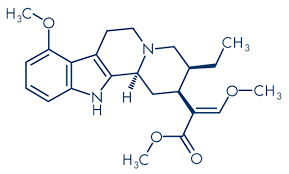
Introduction to Kratom Extract: A Natural Enigma
Kratom, a botanical wonder from the verdant forests of Southeast Asia, has captivated the health and wellness community. Known scientifically as Mitragyna speciosa, this enigmatic plant is more than just foliage; it’s a symbol of nature’s complex bounty. Amidst its rising popularity, innovative products like STNR Creations’ Kratom Gummies are bringing a modern twist to this traditional herb, offering a convenient and enjoyable way to explore its potential benefits.
In this exploration of Kratom, we delve into its origins, traditional uses, and modern adaptations, such as the convenient and palatable Mandarin Green Tea Kratom Gummies by STNR Creations. As we unravel the mysteries of Kratom, we’ll also examine the importance of making informed decisions, guided by scientific research and responsible practices.
What is Kratom?
Kratom, a tropical evergreen tree in the coffee family, is native to Southeast Asia and has been a part of traditional medicine in countries like Thailand, Malaysia, and Indonesia for centuries. The leaves of the Kratom tree contain compounds called mitragynine and 7-α-hydroxymitragynine, which are known for their unique effects on the body and mind.
Traditionally, Kratom leaves were chewed fresh or dried and brewed into tea. They were used for their stimulating and sedative properties, depending on the dosage. In the modern world, Kratom has found its way into a variety of forms, including powders, capsules, and, notably, gummies like those offered by STNR Creations. These Kratom Gummies are a testament to the versatility of this ancient herb, providing a contemporary, user-friendly option for those exploring its potential benefits.
As we delve deeper into the world of Kratom, it’s important to understand its roots – both in the literal sense of its natural origin and in the historical context of its traditional use. This understanding lays the foundation for appreciating its contemporary forms, such as the innovative and palatable Kratom Gummies by STNR Creations, bridging the gap between tradition and modern wellness trends.
Introducing STNR Creations Kratom Gummies
STNR Creations Kratom Gummies, a blend of tradition with the convenience of a gummy. These gummies provide a tasty and easy way to experience Kratom, avoiding the bitterness of its raw form.
The gummies are user-friendly and discreet. They offer a set dose, perfect for both new and experienced users. This way, you can enjoy Kratom’s effects without worrying about measuring the right amount.
Therapeutic Uses of Kratom

It’s important for readers to remember that while Kratom’s therapeutic potential is promising, it’s essential to approach its use responsibly. Consulting healthcare professionals and relying on products from reputable sources like STNR Creations ensures a safer exploration of Kratom’s benefits.
The Legality of Kratom
Internationally, the legal status of Kratom also varies. In its native Southeast Asia, countries like Thailand and Malaysia have regulations or bans in place, primarily due to its history of abuse. Meanwhile, in Europe, the legality of Kratom differs from country to country, with some allowing its use and others imposing restrictions or bans.
The debate surrounding Kratom’s legality often centers on its safety profile and potential for misuse. Advocates argue for its therapeutic benefits and the importance of access for those who find relief from its use. Critics, on the other hand, point to the need for more research, regulation, and awareness regarding its potential risks.
For consumers, especially those interested in products like STNR Creations’ Kratom Gummies, it’s crucial to stay informed about the legal status of Kratom in their region. As the legal landscape continues to evolve, being aware of local laws and regulations is key to responsible and legal Kratom use.

Risks and Safety Concerns Associated with Kratom
While Kratom is celebrated for its potential benefits, it is equally important to address the risks and safety concerns associated with its use. Understanding these aspects is crucial for anyone considering Kratom, including those interested in products like STNR Creations’ Kratom Gummies.
Potential Side Effects
Kratom’s side effects can vary depending on the dose, frequency of use, and individual response. Common side effects include nausea, constipation, sleep issues, and loss of appetite. In higher doses, it may lead to more severe effects such as increased heart rate, high blood pressure, dizziness, and, in rare cases, liver toxicity. Chronic, heavy use of Kratom has been associated with more serious health issues, including dependence and withdrawal symptoms.
The Issue of Contamination and Purity
One significant concern with Kratom products is the lack of regulation in the market, leading to potential issues with contamination or adulteration. This underscores the importance of sourcing Kratom from reputable vendors like STNR Creations, who ensure the purity and safety of their Kratom Gummies.
Responsible Use
To minimize risks, it is essential to use Kratom responsibly. This includes starting with lower doses to assess tolerance, avoiding frequent use to prevent dependency, and being aware of potential interactions with other medications or health conditions. Consulting with a healthcare professional before starting any new supplement, including Kratom, is always advisable.
Conclusion
Kratom, with its dual facets as a traditional herb and a modern supplement, presents both potential benefits and risks. As interest in Kratom grows, so does the responsibility to approach its use with caution and informed judgment. Products like STNR Creations’ Kratom Gummies offer a modern take on this ancient herb, but the principles of responsible use remain timeless.











